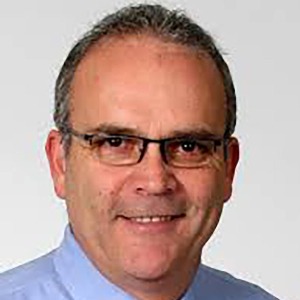In this second of two episodes, John Pracyk, MD, PhD, MBA, MAPS President of the Americas Region, speaks with Patrick Vega of Vizient Advisory Solutions about ways that device companies can capitalize on the shift from inpatient surgical settings to hospital outpatient departments, ASCs and outpatient sites of care. Presenters hypothesize that device companies that better understand the outpatient setting can more effectively adapt their products, services and support to meet customer needs.

MODERATOR: John Pracyk, MD, PhD, MBA

SPEAKER: Patrick Vega, MS
Following is an automated transcription provided by otter.ai. Please excuse inaccuracies.
JOHN PRACYK
Welcome back. This is the second installment of a two part Podcast from the Medical Affairs professional societies perspective series conversations with match president of the Americas region. I’m your host, Dr. John Pracyk and we are continuing an interview with Patrick Vega, Senior Director consultant at Vizient on his recent Ortho World article entitled “How COVID Disruption Accelerates Orthopedic Opportunities in Ambulatory Surgery.” A little bit of housekeeping here first. The views expressed in this recording, are those of the individual and do not necessarily reflect on the opinions of the companies from which they are affiliated. In the podcast we discuss some Foundational aspects of COVID’s impact on orthopedics. Now in the second installment, we’re going to take that discussion of it further and explore a little bit more of Patrick’s recent Ortho World article. For our MAPS listeners a link to Patrick’s article will be posted on the maps website and I have to say I found the graphic to be quite compelling that was contained in this article and have already received many comments. If you missed it. Be sure to listen for a comprehensive grounding and understanding of the entire ambulatory surgery center landscape and hospital outpatient department landscape that we laid during our first podcast but now in this second podcast will take the conversation, further to look at the insights from a panel of experts that Patrick Vega interviewed to further dimensionalize the situation.
So let’s go ahead and get started. But before we do before I get into the very first question I’m going to have Patrick provide just a quick recap of his background briefly and I will do the same in case you didn’t get a chance to hear his introduction in the first podcast. Patrick, could you go ahead and provide a brief recap of your background for our listeners.
Patrick Vega
Certainly, I am Consulting Director with a company that works with hospitals health systems and physicians on matters of cost, quality and market performance. I have worked in health care for the better part of 20 years, most of that in orthopedic spine in neurosciences conducting strategic assessments doing strategic planning development and implementation with hospitals health systems and physician practices. So in that time. I’ve had a pretty extensive exposure to vendors as well. And so have a little bit of understanding of that world. Thank you.
JOHN PRACYK
Thank you, Patrick. This is John Pracyk. I am president of the Americas regions for the Medical Affairs professional society. I’ve been with the organization since 2018 and prior to that I lead the Medtech Focus Area Working Group. As well as had some work in leading our most recent annual meeting in Miami of this year in 2020 just as the COVID situation was starting to unfold. My day job is that I am the integrated leader of preclinical research, clinical research as well as Medical Affairs for Depuy Synthes Spine part of Johnson and Johnson Medical Devices companies. Prior to working at Johnson and Johnson I clinically trained as a neurological spine surgeon and built multi disciplinary spine centers for nonprofit healthcare in the upper Midwest. So it’s an absolute pleasure to have Patrick back for the second podcast. Now, we’re looking at the situation for this ambulatory migration, Patrick, what are the two key locations of the model both inpatient and ambulatory, what are they
Patrick Vega
Right. So in the last podcast we discussed the place of service options and I’ll review them briefly. So from the, from the standpoint of an actual hospital facility and campus. They might include the hospital outpatient department or what we would Use an acronym for called hop the hospital outpatient department or same day surgery, what might be called sds, excuse me, on a freestanding basis, they might include outpatient sites such as physician practices, rehabilitation, urgent care in an ancillary services such as diagnostics interventional pain management and procedure rooms. Additionally, in a little bit more formalized setting might be the ambulatory surgery centers, one of the shorthand version of that as see. And it’s really critical to understand the ownership model there in terms of understanding the capabilities and how they might operate differently, there’s really four models, a physician owned exclusively physician owned model. The second one would be one where there’s a joint venture between a management company that specializes in an ambulatory surgery centers and brings CAPITAL FINANCIAL, clinical expertise in management expertise to the entity and organization. The third model would be exclusively hospital owned. And then the fourth model might be a physician hospital joint ownership, where both the physicians and hospitals have an ownership model. Is that helpful?
JOHN PRACYK
Very helpful. Thanks for dimensionalizing that for our audience. So in order for this migration through these multiple sites to take place what technologies are making the transition to the ASC or ambulatory surgery center possible?
Patrick Vega
Really, it’s been driven by a couple different things. And I would say that was as we look back on the history of ambulatory services, particularly in orthopedics and spine. It’s been driven by improvements in technology advances in technology better pain management more specific and highly defined patient care protocols. That are patient screening and selection for patients that are appropriate and that’s really common whether it was pre covert or postcode postcode it has this migration has been accelerated and that’s the essence of the, the theme of the article has been accelerated because when COVID hit, virtually every acute care hospital in the country. Stop doing elective cases, the vast majority of orthopedic spine cases are elective. It’s a high volume business for hospitals and health systems typically it’s a profitable business for them and when Kobe hit it was essentially put on hold and brought to a standstill. That coupled with patient fears of entering the hospital and being exposed to covenant potentially contract in it. And then the third factor that I would include here would be if patients wanted to still have an elective procedure, they might have a preference to have it done on an ambulatory basis in the near to mid term versus the long term. So hospitals that I work with recently really had about a six month plus phase where they were not doing any kind of elective cases and even that once they began again might be subject to code infection and fears of reinfecting patients, which might result in the discontinuing of elective cases for a period of time. So really, the migration had started to occur over the last 20 years but it’s been accelerated by Copeland again with the discontinuation of elective cases patient fears about entering the hospital and then a patient preference to have their, say for example, joint replacement done sooner rather than later.
JOHN PRACYK
Thank you very much, Patrick. That dimensionalizes that very thoroughly for our listeners. Let’s dig in a little bit to the AFC trends you relied heavily incited in this Beautiful graphic within your article That was based on an SG to research document. What is the 10 year growth trend for Asus, and conversely, what is are commonly what is the 10 year growth trend for inpatient hospital what’s ahead.
Patrick Vega
Certainly, For those that are able to get their hands on the article. It’s really one of the most compelling graphics that it’s been quite a long time. And really what a project is from 2019, a strong tenure growth in the outpatient settings and specifically 31% orthopedics 31% for spine in terms of growth and then declines in the inpatient setting. So a negative 11% for Orthopedics and a negative 17% per spine. And their specific rationale for that one is a site at a moment ago. Really is those things that allow outpatient surgery to be done more safely get better patient screening and selection improve pain management very, very specific highly defined protocols and then one of the other, one of the other factors has been the ability to discharge paces directly to home or a or a transitional care models where they might be, for example, a medical hotel with intensive rehabilitation on the short term basis so For both zentner and terada my two colleagues, they have a deep market knowledge and also a good insight in the provider in data knowledge. The rate of shift to the ASC see settings is very market specific and they signed a term here which I think is very valuable in saying that it’s hyper localized, meaning that it could be almost a, you know, an individual market or even a portion of that market and these factors impact the shift.
Include physician and the physician ownership of the SES, the physician comfort and patient selection criteria in some cases of the regulatory climate for Asus consumer demand and In some cases, it’s been accelerated by pressure from payers. In some cases, employers. So all of these factors, taken together can act as a break or an accelerator for a given market.
JOHN PRACYK
I love the term hyper localized markets that is something that really resonates And I want to pick up on a theme that you just mentioned at the conclusion of your response to my last question, and that is, those of the commercial payers are they helping or hurting the situation, how do you see their contributions.
Patrick Vega
Well, I would, I would say that maybe that it’s not an issue of helping or hurting, but increasingly commercial pairs are Are leading in the Consideration and support for alternative Sites of care to to traditional inpatient settings. And I would say there’s really two factors that the payers are looking at One is cost in terms of what is the cost of care. We’ve seen commercial bundled payment, have an impact on on ambulatory settings so cost is certainly an issue can commercial payers, on behalf of their employer clients find Lower pricing for their for their employer customers and then equal equal important to them is the issue of quality can Provider substantiate quality claims clinical outcomes that are equal or better than patient settings. And I would say as an industry healthcare has been challenged around these issues, oftentimes Providers, whether they be hospitals, integrated delivery networks or physicians point to process of quality that is articulated in process rather than patient outcomes, such as less pain more mobility return to work improved quality of life. So increasingly, we’re seeing commercial pairs, turning to these kinds of measures as well Which are sometimes more qualitative and quantitative but meaningful nonetheless to both the employer into the commercial insurance company.
JOHN PRACYK
Now that’s very helpful. You mentioned various arrangements of ownership and when I think of hospitals until you mentioned it. I always just thought of them as being in sort of one portion of the grid. They actually can play in different sections, depending on whether their owner or not in this ambulatory surgery center or partnering with physicians. So what does this trend mean for hospitals and I mean hospitals in the different dimensions that you already provided?
Patrick Vega
Right, right. I think there’s a couple implications. One is that In very basic language hospitals are oftentimes late to this game of ambulatory surgery late to strategic development of it deployment and effective management of it. And one of the deficiencies that oftentimes encounter is that hospitals have not, have not expended sufficient resources in going back to the first podcast interview they haven’t expanded sufficient resources to understand what is the market opportunity for them. What kind of relationships can they develop with surgeons who my spring cases to them. What is the reimbursement look like and then they also have an understood what their assets are. Do they have exceeded existing space that could be converted one of the state regulatory issues so it’s a lot of this really is strategic assessment. Oftentimes, which is is is not done adequately. On the other hand, you see some systems like one here in the Northeast or 65% of their revenues and this is a very broad, multi hospital academic community based health system or 65% of the revenues are derived by from outpatient sources. So they’ve made a strategic commitment, over time, but I would say that’s the exception rather than the rule. So the implications for hospitals really are around committing to strategic assessment planning and development now some organizations will not have the resources to do that, and perhaps they might conclude that they’re not going to be able to in the near term, or even in the mid term to commit to those kind of resources to develop those to develop the ambulatory services. In in those situations, they may just choose to go without having those as part of their system or they may want to partner with existing and established organizations have that have committed to ambulatory resources. So again, circling back really committing to this strategic assessment to understand both what the opportunity is as well as what the resources are that are required to be successful in the ambulatory setting.
JOHN PRACYK
Now, thank you, Patrick. I think you have clearly established the necessity for understanding the opportunity only go to the next step. I want to build upon that understanding and that is how does one capitalize on the opportunity now that it’s understood?
Patrick Vega
Sure. Well, I think the the. But the organizations that are looking at this from a, from a blank slate, One, they have committed the resources to understand strategically. What is the opportunity. What are the resources that are required I think that The next step then is to develop and mobilize a broad base constituency of physicians surgeons operations strategy and executive illustration to actually deploy those services.
JOHN PRACYK
In that sense, then, with the deployment. What is then the strategy and tactical resources necessary to accomplish that deployment?
Patrick Vega
A couple things. One is really an accurate assessment of the marketplace. And again, I would turn to my st two colleagues who really are specialists in this and understand and All the demographic reimbursement and regulatory environment and and have been able to bring those resources hundreds of clients St. Louis. Oh, very well known consulting and analytics company. And it’s very successful in helping hospitals and health systems to stage. Both understand as well as stage development, a variety of settings, including the ambulatory setting. So really having a good strategic playbook is critical and I’ve seen many situations where hospitals will commit resources based upon the The requests or demands of their medical staff without going through the strategic assessment and in many cases really not meeting expectations because the the the analytic work has not done to support decision making strategy and execution.
JOHN PRACYK
Now that makes perfect sense. And I think it’s like anything else, you have to commit to understanding and then you have to commit to executing. I’m going to shift gears here a little bit in in both the first podcast and at the top of This second installment You dimensionalize the place of service options and I’d like to examine that just a little bit more thoroughly and unpack that, if you will. Patrick, I’d like to pick up on your place of service options that you brought up earlier in the podcast ownership matters, perhaps, how do you see those dynamics playing out because you had doctors and hospitals, things like that.
Patrick Vega
Absolutely ownership. Doesn’t matter. A very common dissatisfaction with physicians is the inpatient setting which oftentimes be impatient operating room which oftentimes they care they characterize as being an efficient experience the long delays. And really interfering with the ability to move efficiently through their day. So if when when surges. Our owners in a ambulatory surgery center, whether it’s a joint ownership with a management company even joint ownership with a hospital setting or exclusively owners themselves. The resources that are expended for the operation of the ambulatory surgery center come out of their pocket, either in part or in whole. So they tend to be much more invested in evaluating purchases looking at efficiencies and In the hospital setting, they don’t have that kind of influence and control, to some degree, that they’re at the mercy of multiple courses within the hospital that drive That drive costs and drive efficiency. So in that sense, absolutely ownership matters. I mentioned in the podcast. Number one, that oftentimes surgeons become much less brand sensitive when they have an ownership stake. So on a hospital in within a hospital setting inpatient or they might have a very strong brand preference for joint replacement, joint replacement devices or spine devices or an ambulatory setting oftentimes price. It’s a greater consideration for them and they would be less inclined to be loyal to a particular brand and more inclined to pay attention to financial considerations.
JOHN PRACYK
I’d like to then think about the retention of cases. With hospitals challenged financially due this year to the suspension of elective surgery. How do you see them responding now to this migration to an ambulatory setting?
Patrick Vega
Well, the an excellent question. The I believe that it’s going to result In, you know, and really, and then I can make a prediction on the pace of this, but I believe that there will be net fewer cases for them so simple, straightforward going replacement or spying cases. I think will continue to migrate toward the ambulatory settings. The, the challenge for hospitals, is that they would like to mean pain. Those cases. So the opportunity for them is to develop those services within their organization or across their system. Or to partner with organizations that have those ambulatory capabilities so
Although the reimbursement sometimes will be lower on an ambulatory basis at least those dollars remain in the system. And I think retention of those patients. Within the system will become critical to them if they have the ability to do that from a facility standpoint into partnerships or through their own To their own services. The challenge is a for for many hospitals and health systems is that directly or indirectly they currently compete with their orthopedic spine surgeons for these ambulatory cases. So the question is, is there a portion of those cases that can be retained in the system in whether it’s a mutually beneficial relationship with the surgeon as well.
JOHN PRACYK
No. That makes perfect sense. Well, we’re coming now to the last section of this second podcast and That is our impact section. These are quick takeaways for orthopedic companies. So I have about five or six questions here. And these are just quick responses, you’ve been very gracious with us and providing detailed Responses up into this point. So this is kind of maybe a way of summing something not quite summing it up for a final statement, but kind of going through a couple quick areas that may be in the backs of our listeners mind. And the first one would be this have hospitals and health systems invested sufficiently in an ambulatory strategy and its execution.
Patrick Vega
I would say Dr. Pracyk that somehow my anecdotal and informal observation is that most have not, as I’ve said earlier that many are preoccupied with the challenges, particularly now with coven in the complexities of running an inpatient setting so Certainly there is the opportunity but sometimes there’s simply not enough bandwidth. I have a lot of affinity for hospitals and health systems and the wonderful work that they do they’re particularly challenged now with the acuity of the of the covert situation. And the challenge is that hospitals are
JOHN PRACYK
Thank you, Patrick. I hope you know how much I appreciate your participation in the Medical Affairs professional societies perspective series. We hope our listeners have gained valuable insights on how covert 19th disruption accelerates orthopedic opportunities in ambulatory surgery. This has been an in depth exploration of your article that you authored for ortho world and our listeners will be able to obtain that by the links associated with this podcast on the Medical Affairs professional society. This now concludes the podcast and until next time, this is John Pracyk, president of Medical Affairs professional society Americas region. Be well and be safe.







